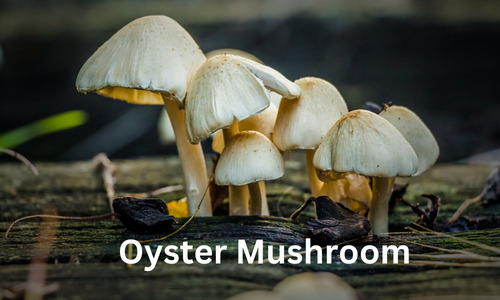Project Report For Oyster Mushroom
Introduction
The project report for Oyster Mushroom is as follows.
The oyster mushroom, or Pleurotus sp., of the Class Basidiomycetes and Family Family tree, is known as “dhingri” in India. It is a wild fungus that grows in temperate and tropical forests on dead and decaying wooden logs or sporadically on dying trunks of deciduous or coniferous woodlands.
It might also thrive on organic materials that are decaying. The fruit bodies of this mushroom can be shell- or spatula-shaped and can be white, cream, grey, golden, pink, or light brown, depending on the species.
The mushroom’s economic importance largely results from its use as a human food source. It contains a lot of vitamin C and B complexes and has a protein content of between 1.6% and 2.5%.
The bulk of the mineral salts required by the human body is present there. The amount of niacin in this veggie is almost ten times higher than in any other.
Oyster mushrooms contain folic acid, which helps cure anaemia. It is suitable for people with hypertension, obesity, and diabetes due to its reduced sodium: potassium ratio, starch, fat, and caloric value.
They are beneficial for those who experience diarrhoea and hyperacidity due to their alkaline ash and high fibre content. P. griseus was used to produce pleurotin, a polycyclic aromatic chemical with antimicrobial properties.
The waste straw can be recycled to produce oyster mushrooms after being properly supplemented with the nitrogen-rich horse or chicken manure or to make compost for white button mushrooms after being appropriately supplemented with wheat or rice bran at a rate of 10-15%. (sun-dried before use). The slurry can be used as manure, and the leftover straw can be used to feed livestock and create biogas.

Market Potential Of Oyster Mushroom
The third most popular variety of farmed fungus is the mushroom. The majority of the world’s oyster production, which amounts to about a million tonnes, comes from China, the biggest producer in the world. Oyster mushrooms are also grown in Thailand, the Philippines, Taiwan, Korea, Japan, Italy, and Italy.
India currently produces only about 1500 tonnes of this product because there isn’t much local demand. Another barrier is the sizeable export demand orders, which can only be met through cooperation between producers, unions, and exporters.
This fungus is not as popular in the United States as the white button mushroom. It is being grown professionally in a few units for export. Commercially growing this mushroom would be more profitable than commercially growing white button mushrooms due to lower initial investment.
This type of mushroom cultivation is particularly simple and inexpensive in rural areas where equipment and raw materials are readily available.
Marketing fresh oyster mushrooms is currently not a problem due to extremely low output. However, as output increases, producers’ links to local markets and export-oriented processing facilities will need to be established to ensure remunerative pricing for producers.
Co-operatives must be urged to pool their production because new orders are frequently too big for one producer to handle in order to trade dried powder in foreign markets. Of all the farmed edible mushrooms, Pleurotus varieties are the cheapest and most straightforward to grow.
Similar to button mushrooms, cultivation does not require the use of a laborious base preparation procedure. On unfermented, virtually fresh plant remnants, the former could survive (agri-wastes containing lignin and cellulose). The substrate does not need to be used in a controlled setting, just like the button mushroom.
Project Report Sample On Oyster Mushroom
Need Help?
Create 100% Bankable Project Report

